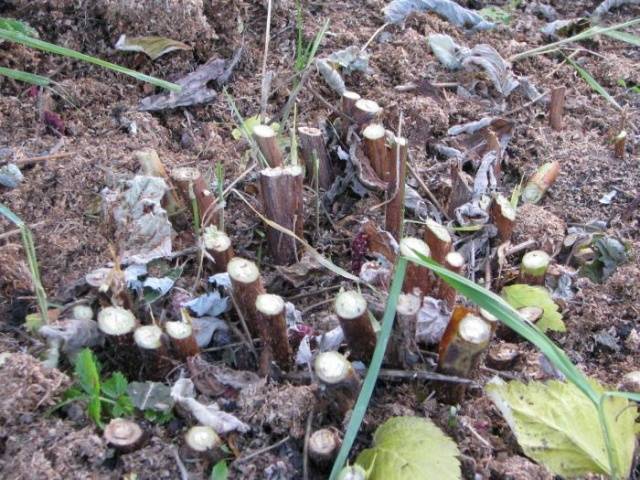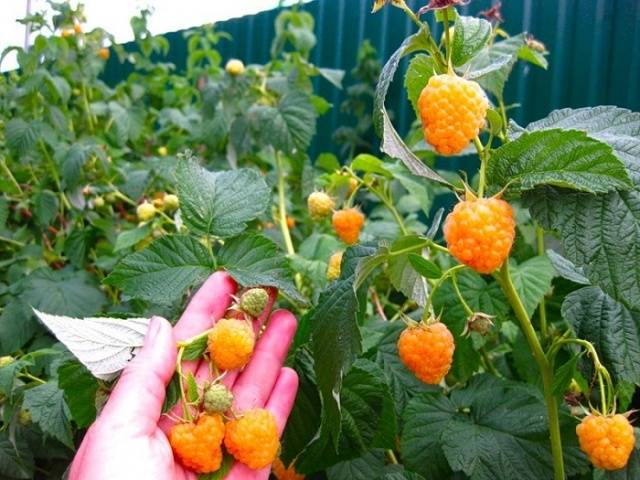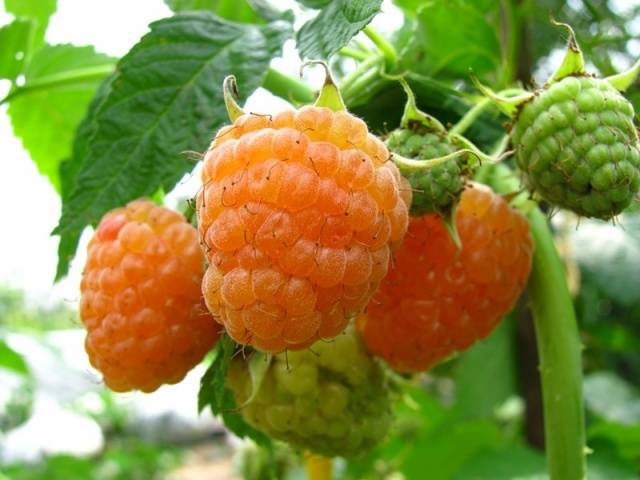Content
Yellow raspberries are extremely rare in our gardens, although they have been known since the 19th century. Now interest in this shrub is increasing year by year. Otherwise it can not be. The berries not only have an unusual yellow color, very uncharacteristic for this crop, but also have a slightly different taste, different from the raspberries we are used to.
Yellow raspberries contain less acid, making them sweeter. Due to the fact that they contain fewer coloring pigments, yellow raspberries can be consumed by people with allergies, as well as children and pregnant women.
Yellow raspberries contain vitamins and microelements, especially a lot of iron, potassium, and magnesium. Therefore, the use of fruits is indicated for those who have problems with the heart and blood vessels or have suffered a heart attack or stroke. Yellow raspberries can also be used to treat colds, as they contain salicylic acid. Raspberries can be consumed to stimulate digestion and improve appetite.
The healthiest thing, of course, is to eat raspberries fresh. Preparations made from yellow raspberries are very tasty: compotes, marshmallows, preserves, jams.
The disadvantages of yellow raspberries include the fact that the fruits do not tolerate transportation very well.This was the case before, but now this information is somewhat outdated. Modern breeding science does not stand still. Scientists have developed varieties with specified properties aimed at ensuring that the berries retain their shape and do not wrinkle. Therefore, gardeners should pay attention to varieties developed recently.
Yellow raspberries have the property of remontancy - the ability of plants to bloom and produce crops several times during the growing season. This property adds advantages to the shrub. Remontant plants tolerate temperature changes well, do not freeze in winter, are resistant to diseases, and have high yields.
Features of cultivation
To get a decent harvest of berries, you need to plant the plants correctly and care for them. The agricultural technology is simple, does not differ from the agricultural technology of ordinary raspberry varieties, but requires compliance so as not to be left without berries at all.
Planting and fertilizing
Planting yellow remontant raspberries begins with choosing a location. This should be approached as responsibly as possible, since plants are not planted for one season. Do not plant yellow remontant raspberries after any other raspberries, as the soil is too depleted. It is not recommended to plant after nightshades, as there is a risk of infection with certain diseases (for example, verticillium wilt).
In your garden plot, choose a flat, well-lit area for yellow raspberries, without significant slopes or elevations.
For yellow remontant raspberries, sandy or loamy, slightly acidic soils rich in organic matter are suitable. Light soils are filled before planting with humus or rotted manure (3 buckets), ash (300 g), superphosphate (200 g). Consumption is given per 1 meter of future plantings.Dig trenches 40 cm deep and up to 50 cm wide, fertilizers are placed in them and mixed with the soil.
If such pre-planting preparation has not been carried out, then fertilize the plants in the fall by spreading compost on the surface under the bushes. Carry out the procedure annually. In spring, plants can be fertilized with an infusion of slurry (1 part infusion to 10 parts water).
Remontant raspberries require a lot of nitrogen. Feed the plant with urea (40 g of fertilizer per 1 meter of trench) in the spring, after the snow has melted.
Yellow raspberry varieties planted in late September or early October. Planting in trenches is most effective. The spacing between rows is up to 1.5 meters, and between plants approximately 40 cm.
After planting, the soil around the remontant plants is mulched with straw, peat, sawdust, and fine manure. Mulching retains moisture in the soil and its looseness, preventing development weeds.
Watering
Yellow remontant raspberry needs watering. Especially if it grows in the southern regions. About 8 waterings per season may be required; yellow raspberries are especially demanding of moisture during the period of shoot growth and flowering. Rain moisture is sometimes not enough, since the soil under the bushes must be moist to a depth of 10 cm. Watering is done in the furrows.
In central Russia, watering is reduced to 3 times per growing season to allow the shoots to gain green mass during the flowering period, when the future harvest is being planted, and it is also recommended to water yellow raspberries after harvesting. In the middle zone, sprinkling is quite sufficient.
Tying up
Gardeners tie up all varieties of raspberries. The plantings take on a well-groomed, neat appearance. It is easier to move between rows to care for and harvest crops.
At the ends of the rows, posts are dug in, and a wire is pulled between them at a height of 1-1.3 m. If the rows are very long, then the posts are dug in at a frequency of 4 m. The second row of wire is pulled at a height of 30 cm from the ground surface.
A piece of strong twine is used to cover the raspberry stem and the wire running nearby. This way, the raspberry bushes are securely fixed. Take synthetic material for tying, so that it will last for the season; natural materials quickly decay and tear.
Trimming
Remontant yellow raspberries are pruned to ensure proper formation of the future harvest. Features of remontant raspberries the fact is that annual shoots are capable of producing a harvest, but this harvest will only be in the fall. Since the shoots need time to fully form. In autumn or early spring, shoots that have already bear fruit are cut out. Cut all shoots to soil level. This makes it possible to get a harvest in the autumn.
Moreover, remontant varieties bear fruit in the fall for 2 months, right up to frost.It is best to prune in late fall, after frost, or early spring, before the plants bud.
Still, it is not recommended to collect two harvests from remontant raspberries. The berries become small because the plant spends too much energy on summer fruiting.
Video tips:
Pruning yellow raspberries has another purpose. Remontant varieties especially do not like dense plantings. Therefore, you should leave about 5 good healthy shoots.
Varieties
Having understood the features of agricultural technology, we will focus on varieties of remontant yellow raspberries. If you want to get an autumn harvest, then it occurs at the end of August - beginning of autumn and before frost. When receiving two harvests, the timing of the first harvest depends on the selected variety of yellow raspberries.
Golden domes
An early variety of remontant raspberry with an elongated berry shape. The fruits are sweet with a subtle sourness and tolerate transportation well. The variety produces two harvests, but one harvest, obtained from August until late autumn, is much richer. The plant is resistant to frost, drought, and disease. The yield is high: 2 kg of berries from 1 bush. When receiving one harvest, it begins to bear fruit in early August.
Yellow giant
A mid-early variety with very tasty, aromatic, cone-shaped berries. The berries are large, up to 8 g, but do not tolerate transportation very well. Productivity is high (5-10 kg per bush). In wet or too hot weather conditions, the berries spoil. The bushes tolerate wintering well. The variety is most suitable for growing on private plots for fresh consumption of berries.Children especially love Yellow Giant berries;
Apricot
A variety that differs from others in its unusual taste. The berries are conical in shape with a slight apricot flavor, weighing up to 3.5 g. A garter is required, since the variety is very high-yielding. The bushes are not spreading, erect, slightly thorny. The thorns are located at the bottom of the shoot.
Golden autumn
The variety is mid-early, remontant. The berries are golden-yellow in color and large; they are classified as dessert berries, as the fruits have a refined aroma and delicate taste. Productivity 2.5 kg per bush. The plant tolerates wintering well, requires light, and produces a richer harvest in a sunny place. Although the shoots are not tall, they need to be tied up. There are few thorns, they are located at the bottom of the shoot.
Orange miracle
A mid-early remontant variety with conical berries that contain a lot of vitamin C. The taste of the berries is pleasant, sweet, slightly sour. Fruit weight is 5-10 g. The bushes are powerful and tall. They tolerate climatic conditions with sudden temperature changes.
Brusvyana (Yaroslavna)
The remontant variety is more suitable for the southern regions; the bushes are up to 2 m high, form a lot of shoots, but have weak branches. The berries are sweet and sour, bright yellow in color, and look very attractive on the bush. They tolerate transportation well.
Conclusion
Remontant yellow raspberries are becoming increasingly popular, as they lack some of the disadvantages inherent in varieties of ordinary raspberries. Remontant raspberries produce shoots and harvest in one season and are not damaged by pests due to the fact that the development cycle of pests does not coincide with the fruiting time of yellow raspberries. Most varieties can withstand Russian frosts and are not affected by diseases.
Yellow raspberries deserve attention because they are very beneficial for the body and can be consumed by allergy sufferers without harm to their health.
Even novice gardeners can cope with growing varieties of remontant yellow raspberries, especially if they adhere to simple agricultural techniques.
























